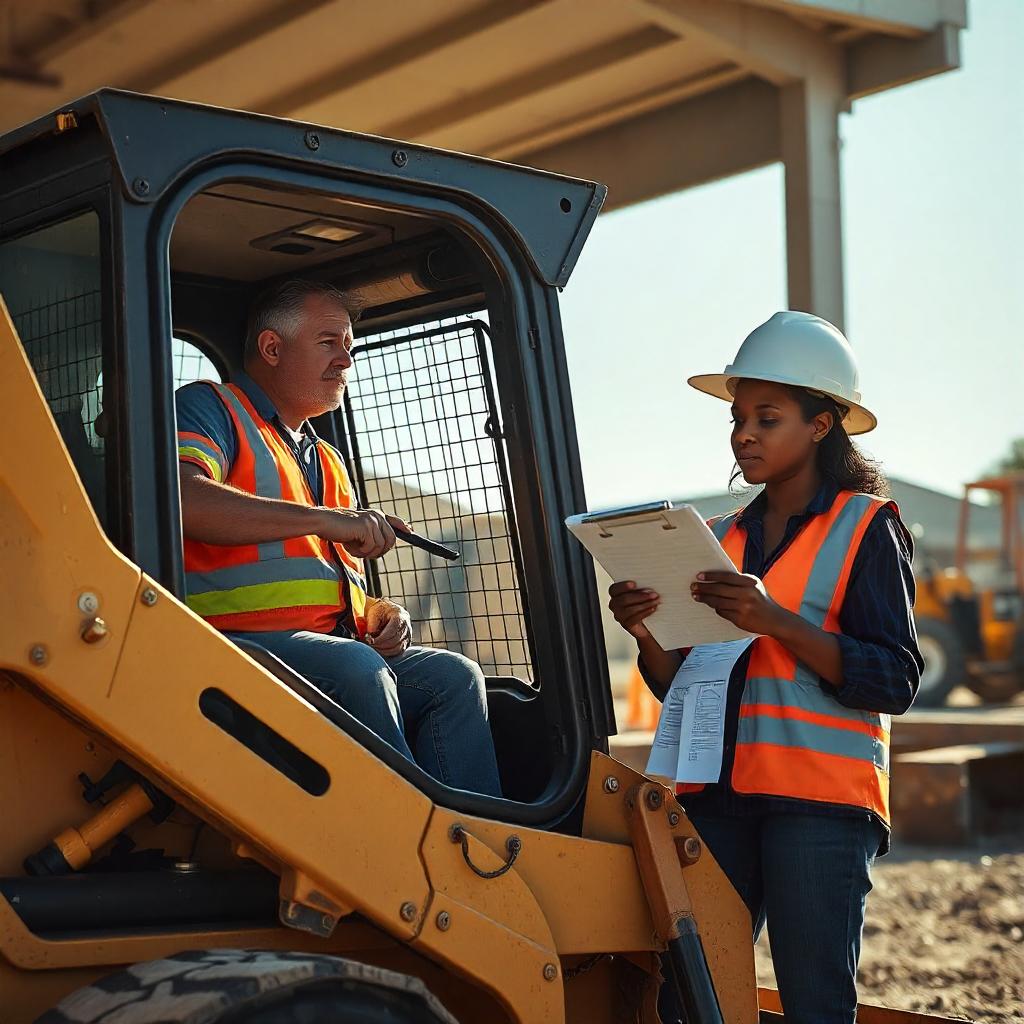Skid steer loaders are a staple in construction, landscaping, and agricultural projects due to their unmatched versatility and power. However, with great utility comes great responsibility—operating or even working near these machines requires strict adherence to safety protocols. Without proper precautions, skid steers can pose significant risks, including rollovers, collision injuries, or crushing incidents.
This blog focuses on three key safety tips that every operator and worker must know to ensure a safe and efficient work environment.
With all kinds of construction tasks speeding up for winter and spring work, it’s a perfect time for safety alerts. The National Institutes for Occupational Safety and Health have written an explain alert named “avoiding mishaps and Deaths from Skid Steer Loaders.” You can read this article to use in learning classes, but we thought it crucial to explain these three key skid steer safety points:
- Never ride onto the skid steer loader unless the lift-arm supports are in place or the bucket is placed flat on the soil.
- To climb on machine, face the machine and keep 3 points of contact on the foot steps and handholds.
- Do not climb just on your hand or foot controls/ balance.
- When it’s the moment to leave, do not vacate your seat before dropping the bucket to the floor, applying the parking brake, and then shut down the engine.
- Do not jump off the skid steer — obey the same three-point-contact method to leave.
- Cleanse the walkways and other operating surfaces so the machine is prepared to go for the next day or shift.
For individual safety:
- Never try to run the machine from the outside. The operator’s cabin is not only efficient, it’s a position of safety for drivers.
- Sit down when using the skid steer, so you can keep your balance.
- Hold your legs, arms, and head inside the cabin when it’s working.
- Wear your seatbelt while operating. Make sure the restraint bar is in place. Never remove any safety device.
- Make sure viewers or workers on the floor are far sufficiently away to see them and avoid damage.
For safe procedure:
- Try not to ride the machine or load/unload where the land is not level, to avoid tipping. Never travel across inclines but straight up and down. The heavy side of the machine should face uphill.
- Do not use the skid steer on unstable land.
- Always maintain the bucket in the lowest feasible position when transporting or turning.
Observe proper maintenance methods.
- Constantly follow the manufacturer’s advice for service and preventative maintenance. A machinery that has not been appropriately maintained is an open invitation to safety breaches and mishaps.
- Wash the foot commands as often as required to keep them free of mud, snow, ice, or waste.
- Regularly review and keep safety belts, restraint bars, side screens, interlocked controls, and the rollover protection structure (ROPS). NEVER remove or modify any safety apparatus.
- It is not advisable to conduct any maintenance practice beneath a raised bucket. If you have no option left, make sure the lift-arm supports are in place.
And we’ll add a 4th skid steer safety tip: it’s not only workers who need to be extra cautious when operating a skid steer. Those workers on the ground near loaders or any moving machinery need to be fully aware of their area. Even the best driver doesn’t necessarily have 100% visibility, especially when both machinery and individuals are on the move. Safety is everyone’s job.
Safety should always be the priority when operating or working near a skid steer loader. By following these three essential tips—prioritizing proper training, maintaining clear communication, and conducting regular equipment checks—you can significantly reduce the risk of accidents and create a safer job site. Remember, a well-informed and vigilant team not only enhances productivity but also ensures everyone gets home safe at the end of the day. Embrace these safety practices and lead your projects with confidence and care!

